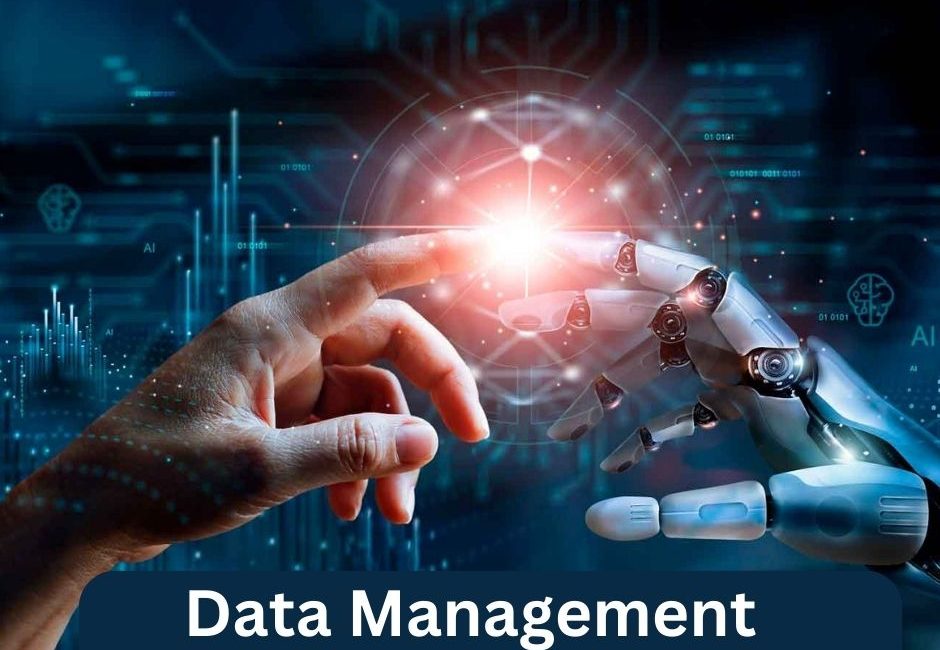
As artificial intelligence and automation transform how businesses manage data, many are eager to hand over data management entirely to automation and reduce human involvement. However, while AI ensures efficiency, its lack of judgment, oversight, and domain expertise can lead to mistakes, biases, and blind spots that undermine data value and integrity. Instead, the ideal strategy is a hybrid approach, with humans involved in the loop of AI, combining their creativity, intuition, and context with machine speed and rigor.
Let’s explore how humans and AI come together to improve data management and why over automating data management or relying entirely on AI can backfire.
When it comes to data versus AI, data comes first
Although AI has become a dominant force in the enterprise data landscape, technology leaders have come to agree that AI needs data more than data needs AI.
Data is the lifeblood of business insights and effective decision-making, with or without AI. Valuable data exists independently and can be analyzed by algorithms or humans. In contrast, artificial intelligence relies entirely on data. AI models are useless shells without access to quality training data that enables them to learn, improve, and derive meaningful patterns and predictions.
In this scenario, allowing an AI system to manage data can only be possible with complete trust on the system. This trust is not easy to come by, owing to multiple gaps in AI-decision making.
Limitations of using AI for B2B data management
- AI may miss contextual nuances, causality, or make biased assessments without human oversight.
- Issues with data completeness, accuracy, or biases can lead to flawed model outputs.
- AI models require specialized and expensive compute power and data storage.
- Automated analysis of customer data raises potential ethics and privacy issues.
- AI models rely on past data which may not always predict future behavior.
- The mechanism of how an AI model reaches any decision is not transparent, and can not be relied upon entirely.
The role of human insight and experience in automated data management
As of now, artificial intelligence has not reached the point where it could beat human experience.
For instance, experienced data scientists can notice subtle data errors or inconsistencies that algorithms overlook. Domain experts in sales or marketing can provide context to improve data labeling or analysis based on real-world knowledge. And data governance specialists can ensure ethics, privacy, and regulatory obligations are met – an area algorithms struggle with.
At the same time, AI is beneficial for accelerating repetitive tasks and revealing insights at scale that humans can not.
Benefits of using AI for B2B data management
- AI can quickly process, extract insights, and identify patterns across huge datasets beyond human capabilities.
- It can continuously learn from new data to improve analysis, predictions, and recommendations.
- It can help create customized recommendations and experiences for each customer/client by analyzing their data profiles and behaviors.
- AI can help optimize sales, marketing, and service operations by identifying the highest value customers and opportunities.
- AI techniques like machine learning allow businesses to make data-driven forecasts and predictions about future outcomes.
The key is finding the right balance where AI handles routine data tasks while humans provide guidance, supervision, and sense-checking. For example, algorithms can rapidly process and extract signals from customer data, then a data analyst can review and interpret those patterns using their understanding of the business context.
Real-World examples where humans augment AI
-
IBM Watson
The first example is a case where human intelligence was not integrated with AI, and thus the project faced failure and loss.
IBM initially portrayed Watson as a healthcare assistant. By feeding a patient’s symptoms into Watson, it would provide doctors with a ranked list of possible diagnoses along with confidence scores and links to medical research supporting each diagnosis.
IBM was over-ambitious about Watson’s capabilities in an extremely complex and regulated field like healthcare. Watson needed large amounts of high-quality, real-world patient data to be properly trained for medical diagnosis and treatment recommendations, which proved difficult and expensive for IBM to obtain. Integrating Watson into actual clinical workflows and getting doctors to trust AI recommendations was very difficult in practice. Additionally, it wasn’t always clear how Watson arrived at its recommendations, making doctors rightfully skeptical.
Facing growing criticism and setbacks, IBM decided to exit the healthcare space entirely by selling off its once-promising but struggling Watson Health division in January 2022 to the private equity firm Francisco Partners. At this time, Watson was reported to generate around $1 billion in annual revenue and no profit.
-
A digital revenue recovery company
The second example is a case where human intelligence was integrated with AI, and as a result, the system became smarter.
This example is taken from a case study that outlines how a digital revenue recovery company was facing challenges with its AI-based web scraping solution. It was unable to detect complex brand abuse tactics on eCommerce sites, leading to missed revenue recovery opportunities. To address this, the company opted for data management outsourcing and brought in human analysts to identify gaps in the AI’s pattern recognition around emerging brand abuse techniques.
A human-in-the-loop system was implemented where the AI flagged suspicious listings for human expert review. This allowed continuous feedback loops where the AI and humans enhanced each other’s capabilities and the overall outcome. That significantly improved detection of brand abuse, leading to 80% more revenue recovery for the client.
This illustrates how exclusively relying on AI led to blind spots, while integrating human subject matter expertise to supervise and re-train algorithms improved the accuracy and value derived.
How to blend AI and humans for responsible data management
As an enterprise trying to work with the human-in-the-loop approach for B2B data management, here is what you can do.
- Let data experts handle sensitive aspects of data workflows like consent, privacy, ethics where human judgment is critical. Let AI focus on automating repetitive tasks.
- Leverage both rules-based models and human judgment for data classification to balance consistency and adaptability. Rules ensure baseline integrity while humans adjust for edge cases.
- Use AI for rapid data processing and pattern identification, then have human experts validate and interpret results using business/world knowledge before acting.
- Appoint human data stewards accountable for monitoring AI data systems, evaluating them for bias/errors, and instituting guardrails aligned to ethics and values.
- Train AI models on carefully curated and unbiased datasets to mitigate ingrained prejudice or discrimination in outputs.
- Document and communicate choices made during data processing by AI to ensure transparency for stakeholders impacted by automated decisions.
- Build diverse teams combining domain experts, data scientists, and ethicists to holistically evaluate and improve human-AI data systems.
Otherwise, you can adopt a simpler approach- data management outsourcing.
Reach out to any experienced data management services provider who can handle this process for you. Discuss how they implement human-in-the-loop of AI-powered data management and how they can improve your current data management approach with smarter AI integration.












